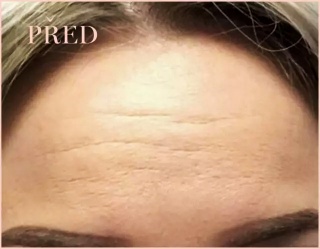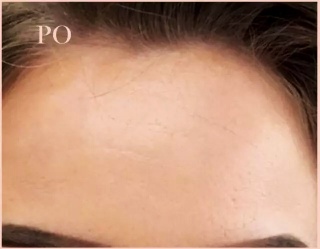Removing face wrinkles using botulinum toxin
Botulinum toxin reduces movement of the facial muscles, and so also the appearance of wrinkles. Botulinum toxin doesn’t just smooth wrinkles, but also represents an excellent method to prevent them from appearing. It is applied using a thin needle (so-called insulin needle) onto the treated site, meaning it is almost painless.
Frequently Asked Questions
Where is botulinum toxin most often applied?
Botulinum toxin is most commonly used to smooth wrinkles:
- in the forehood area
- between the eyebrows – to smooth out frown lines
- in the areas around the eyes
- above the upper lip. Our surgeries endeavour to limit application in the upper lip area because this can result in partially restricted movement of the upper lip. These wrinkles can, however, be effectively removed by using hyaluronic acid.
How long does the procedure take, and when does the outcome become apparent?
Botulinum toxin application does not require an anaesthetic. The substance is applied using a thin needle to the nerve endings of the particular muscle. The entire treatment takes roughly 10 minutes. Within 20 minutes following the application, the tiny puncture marks are gone and nobody will recognise that you have undergone any procedure. The outcome is visible within 3-6 days following application.
Is the effect of the procedure permanent?
The effect of botulinum toxin is temporary and lasts 3-6 months. When applications are repeated, the effect will be prolonged.
Are there any restrictions following the application of botulinum toxin?
After the application you should not lie in a horizontal position or lean forward for 4-6 hours. It is not recommended that you undertake excessive physical activities or visit a sauna or tanning beds for a period of three days.
Despite many years’ experience of the substance, we do encounter negative attitudes towards this method: clients are often afraid that it is a poison.
Botulinum toxin as used in medicine is entirely safe.
At the end of the 1970s, Dr Scott and Dr Shantz developed Botulinum toxin Type A for people. In 2002, Botulinum toxin was approved by the American Food and Drug Administration for treating face wrinkles. In 2004, Botulinum toxin was approved for the treatment of excessive sweating in the underarm area. It has also recently begun to be used to treat migraine
Who cannot undergo the procedure?
- Clients with acute bacterial or viral infections. If this is the case, you should postpone the procedure until you are fully recovered.
- Pregnant and breast-feeding clients.



